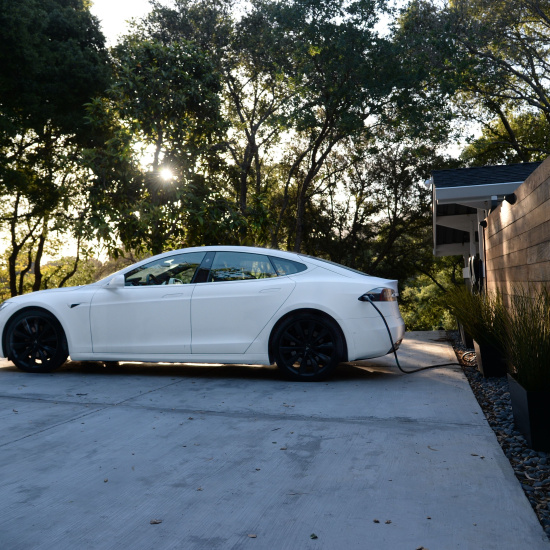EVs: The Burning Question
Shane Prendergast, Programme Manager for EV Charging Infrastructure & Policy and Smart Networks, highlights the clear research and evidence available which debunks the myths and false narratives around the chances of an EV catching fire.
The uptake of Electric Vehicles (EVs) continues to increase, and they are cementing themselves as a norm within the automotive landscape. In 2023, 1 in 4 of every new car sale was an electric car.
With the strong momentum and penetration of EVs in the automotive industry, more and more interesting EV-specific topics and perceptions (aside from the usual benefits and perceived barriers) are surfacing among the public. One such topic is around the fire risk and fire safety of an EV and that there is a high-risk factor of an EV catching fire.
A few high-profile vehicle fires featured in the media in 2023. You might remember the one at Luton airport car park and another on a North Sea cargo ship. In both incidences speculation pointed immediately towards EVs as the vehicle type involved. However, it later emerged that the fires were caused by petrol and diesel vehicles. Unfortunately, 'fake news' and poor reporting provoked feelings of fear, worry and anxiety amongst the public around EVs and EV chargers, adding to the negative narratives around their fire safety.
But the research is clear and there is data available to speak to the truth of the matter.
Let's start with what a fire needs to propagate.
A fire or explosion simply requires three ingredients: fuel, an oxidant, and an ignition source.
There are three main types of fuel to consider for road-going vehicles: gas (hydrogen, CNG etc.), liquid (petrol, diesel) and electricity (battery pack). What happens with each of these fuels when fire propagates:
- Gas moves quickly in all directions and mixes with the air which has the potential to create an explosive mixture.
- Liquids flow and in vehicles liquids are stored in an enclosed tank. If there is a nearby fire, the liquid gets hotter and forms a vapour which increases the pressure in the tank until it breaks. This causes a boiling liquid, expanding vapour explosion (known as 'BLEVE') more akin to films than real life.
- Solids on the other hand, won't flow, diffuse or escape. This is the fuel type you will find in an electric vehicle. With the batteries contained in battery casings, fires for the most part are confined to the casings.
When trying to compare the fire risks or fire events caused by EVs vs petrol/diesel vehicles, let's start by looking at Norway and its high market penetration of EVs. In Norway, according to the Directorate for Social Security and Emergency Preparedness, there are close to five times more fires in petrol and diesel vehicles than in EVs. In Norway 9 out of 10 new vehicles sold are fully electric and over 20% of the national fleet in Norway is fully electric.
A recent study in Sweden (approaching 15% of national fleet being electric) highlighted approximately 0.004% of EVs had fire events (23 out of 611,000). While approximately 0.08% of petrol/diesel vehicles had fire events (3,400 out of 4,400,000), suggesting petrol/diesel vehicles are 20 times more likely to catch fire.
Euro NCAP (European New Car Assessment Programme) have conducted numerous tests where, despite robust impacts to the front and sides of EVs, there have been no fire events.
To step back for a moment, the data available to date all suggests that EVs are a lot less likely to catch fire than a petrol or diesel vehicle. Considering the evolving technology and alternative make ups/compositions/materials emerging in battery chemistry, EVs will become less and less likely to catch fire.
So why is there an ongoing sense of fear and anxiety around the chances of an EV catching fire?
In my opinion, it's down to the following:
- A lot of petrol/diesel vehicle fires are not reported and are considered "normal" so do not grab the attention.
- EVs are fast becoming part of the norm in the motor industry but remain topical and a popular discussion in the media. A fire in an EV makes for an 'attention-grabbing' headline - as the general public's collective experience of them is still in its early days. EVs burn differently to petrol and diesel and can require a different approach to extinguishing.
I will leave the answer to this burning question up to you to decide!
But with all the available data, the myth of EVs being more susceptible to fire is, in my opinion, debunked!




